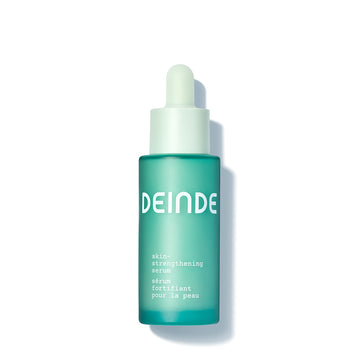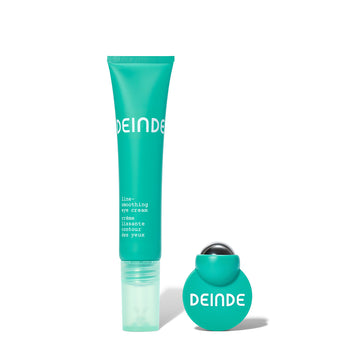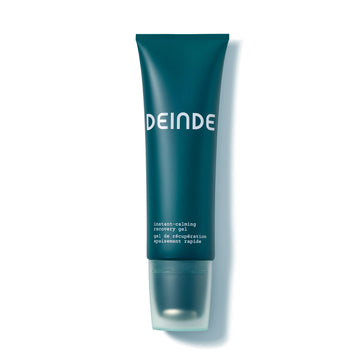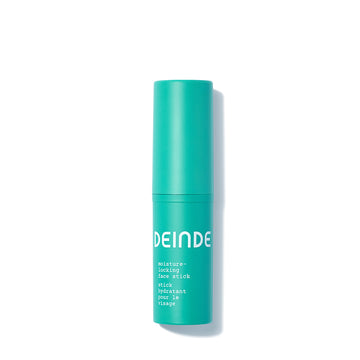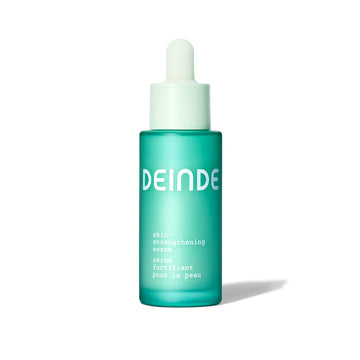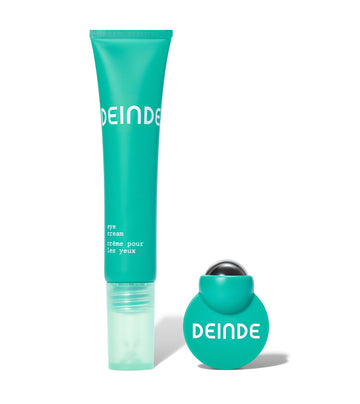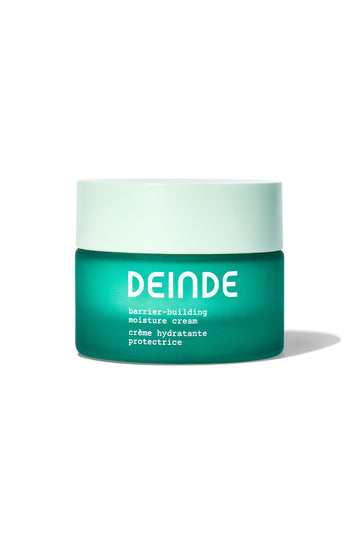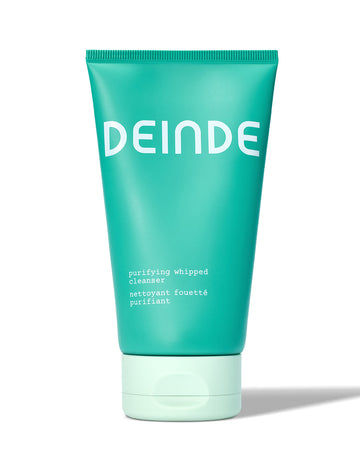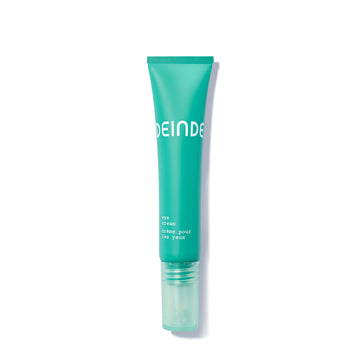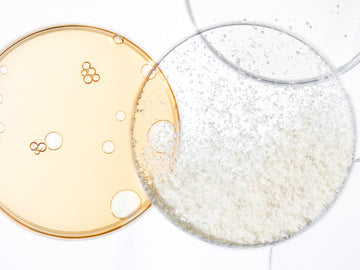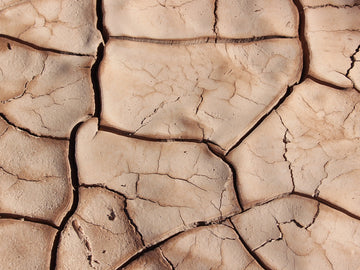
The Dos and Don'ts of Chemical Peel Aftercare
When it comes to chemical peels, it’s very easy to think back to Samantha Jones (miss her) in season 5 of Sex and the City, looking like a beekeeper at Carrie’s book release party. “I’ve had a little something done,” she says, followed by a look of horror on Carrie’s face. “You look like beef carpaccio!”
Although that scene has forever imprinted upon our brains, we have since learned that chemical peels are 1) not that dramatic, 2) very popular, and 3) extremely effective in terms of skin rejuvenation. They can help reduce the appearance of fine lines, acne scars, and hyperpigmentation, and improve overall skin texture. However, achieving the best results and avoiding complications requires careful aftercare that both maintains the skin’s overall resilience while also supporting the skin’s natural healing process.
We’re going to give you the dos, don’ts, and DEINDEs of how to optimize your skin’s recovery if you choose to peel back the layers.
What exactly is a chemical peel?
A chemical peel is a skin-resurfacing procedure in which a chemical solution is applied to the skin to remove the top layers (and therefore past skin damage). Not only does this type of “injury” to the skin promote a healing response, but it also promotes smoother, more youthful-looking skin.
There are different types of chemical peels, ranging from superficial peels (light) to medium and deep peels, each targeting different skin issues and varying in recovery time.
What are the different types of chemical peels?
-
Superficial Peels: Rather than going super deep into the skin, superficial peels use mild acids like alpha-hydroxy acid to gently exfoliate the skin (think: a little stronger than your usual liquid exfoliant). This type of cosmetic treatment only penetrates the outer layer of skin and is used to improve the appearance of mild skin discoloration and rough skin.
-
Medium Peels: Medium peels take things one step deeper with acids like trichloroacetic or glycolic acid to reach the middle and outer layers of the skin. They are used for treating wrinkles, acne scars, and uneven skin tone.
- Deep Peels: Now this is where things get serious. Deep chemical peels use stronger acids like phenol to penetrate deeply into the skin. They are used for deeper wrinkles, severe sun damage, and scars. Deep peels offer more dramatic results but also come with a longer recovery time (a la Samantha Jones’ netted hat).
How to prep for your peel.
How you prepare for your peel is as important as your post-peel routine. Here are some steps to prepare your skin:
-
Avoid Direct Sun Exposure: Minimize sun exposure for at least two weeks before your peel. Sunburned skin cannot be treated with a chemical peel.
-
Discontinue Certain Medications: Stop using retinoids, exfoliants, and other potentially irritating products or harsh chemicals as advised by your dermatologist.
-
Stay Hydrated: Drink plenty of water and use a good moisturizer to combat dryness and keep your skin hydrated.
- Follow a Gentle Skincare Routine: Avoid using harsh skincare products leading up to your peel. Stick to gentle cleansers, serums, and moisturizers that support the skin’s natural pH balance and therefore barrier resilience. DEINDE’s skin-fortifying bundle (which consists of our cleanser, serum, and face stick) gently cleanses the skin while reducing the key signs of aging and combating against external stressors that damage the skin.
The “dos” of post-peel aftercare
Do…
- Keep Your Skin Hydrated
Hydration is crucial after a chemical peel. Your skin may feel tight and dry, and keeping it well-moisturized helps with the healing process.
-
Use a Gentle Moisturizer: Opt for a moisturizer that is free of fragrances and other potential irritants. Products containing hyaluronic acid can be particularly effective.
-
Lock in Hydration on the Go: DEINDE’s moisture-locking face stick helps to soothe the skin and calm irritation no matter where you are. With our patented polyphenol powerhouse, Naringenin, you can optimize your skin’s natural healing process while sealing in moisture.
-
Drink Plenty of Water: Staying hydrated from the inside out is essential for overall skin health and healing.
- Protect Your Skin From the Sun
Post-peel skin is very sensitive to UV radiation. Sun exposure can cause hyperpigmentation and hinder the healing process.
-
Apply Sunscreen Religiously: Use a broad-spectrum sunscreen with at least SPF 30. Reapply every two hours, especially if you're outdoors.
-
Wear Protective Clothing: Hats, sunglasses, and clothing that covers your skin can provide extra protection from the sun.
- Keep Your Face Clean
Maintaining cleanliness is essential to prevent infection and promote healing.
-
Use a Gentle Cleanser: Cleanse your face with a mild, non-abrasive cleanser. Avoid hot water and instead use lukewarm or cool water. DEINDE’s purifying whipped cleanser supports your face’s natural microbiome while gently washing away impurities. The result: stronger, smoother, calmer skin.
-
Pat Dry: After washing your face, gently pat your skin dry with a clean, soft towel. Avoid rubbing or using rough materials.
- Keep Your Skin Barrier Balanced
Your skin barrier is the ultimate shield against external stressors, however, chemical peels can disrupt this barrier by causing acute “injury” to the skin.
Using products like our purifying whipped cleanser and skin-strengthening serum maintains the skin’s natural balance, supporting better resilience to outside factors that cause oxidative stress. Those outside factors, if gone “unchecked,” can lead to long-term, chronic inflammation of the skin (aka inflammaging). Especially when your skin is so vulnerable post-peel, keeping it calm and strong is essential.
- Be Patient with the Peeling Process
Peeling and flaking are normal parts of the healing process. Letting your skin shed naturally is important (shoutout to all of the people who enjoy proactively peeling your face—don’t do it!).
-
Allow Your Skin to Peel Naturally: Resist the urge to pick at or peel off flaking skin, as this can lead to scarring or infection.
-
Use a Hydrating Mask: Once the peeling has mostly subsided, using a hydrating mask can help soothe and rehydrate your skin.
The “don’ts” of post-peel aftercare
- Don’t… Expose Your Skin to Heat
Heat can exacerbate inflammation and irritation post-peel.
-
Avoid Hot Showers and Baths: Use lukewarm water instead.
-
Stay Away from Saunas and Steam Rooms: These can significantly irritate your skin after a chemical peel.
- Don’t… Use Harsh Skincare Products
After a chemical peel, your skin is extremely sensitive and needs time to recover.
-
Avoid Exfoliants and Scrubs: Using exfoliants too soon can damage your newly forming skin.
-
Steer Clear of Active Ingredients: Ingredients like retinoids, alpha hydroxy acids (AHAs), and beta hydroxy acids (BHAs) should be avoided until your skin has fully healed.
- Don’t… Pick or Scratch Your Skin
It can be tempting to pick at peeling skin, but this can lead to complications.
-
Resist the Urge to Touch Your Face: Touching can transfer bacteria and oils from your hands to your face, increasing the risk of infection.
-
Don’t Peel Off Flakes: Let the peeling process occur naturally to avoid scarring.
- Don’t… Skip Moisturizer and Sunscreen
Consistency in your aftercare routine is key to achieving the best results.
-
Moisturize Regularly: Even if your skin feels oily or uncomfortable, keep it moisturized to support healing.
-
Apply Sunscreen Daily: Sun protection is non-negotiable post-peel to prevent pigmentation issues.
- Don’t… Engage in Strenuous Activities
Physical exertion can cause sweating, which might irritate your skin and delay healing.
-
Avoid Heavy Exercise: Refrain from activities that make you sweat heavily for at least a week post-peel.
-
Keep Cool: Stay in air-conditioned environments and avoid excessive heat.
What to expect after a chemical peel
Superficial Peels
-
Short Recovery Time: Recovery from superficial peels is typically quick, with minimal downtime.
-
Mild Aftercare: Focus on hydration and sun protection. You can usually resume your regular skincare routine within a few days.
Medium Peels
-
Moderate Downtime: Expect some redness, swelling, and peeling for up to a week.
-
Enhanced Moisturization: Keeping your skin well-hydrated is critical. You might need to use heavier moisturizers and barrier creams.
Deep Peels
-
Extended Recovery Period: Deep peels require a longer recovery time, often several weeks.
-
Strict Aftercare Regimen: Follow your dermatologist’s aftercare instructions rigorously. This may include specific ointments, frequent cleansing, and protective measures to prevent infection and promote healing.
What are the main side effects from a chemical peel?
Redness and Swelling
-
Normal Reaction: Redness and swelling are common after a chemical peel, particularly with medium and deep peels.
-
Cold Compresses: Applying a cold compress can help reduce swelling.
-
Patience: Redness may persist for several weeks, especially after deeper peels. Use makeup sparingly to cover redness, and only after your skin has healed sufficiently.
Itching and Irritation
-
Soothing Balms + Creams: If your skin feels irritated or itchy, opt for something like our moisture-locking face stick, which is a compact face balm that locks in essential moisture while protecting against damage from daily environmental stressors. It has been clinically proven to boost moisture instantly and over time and reduce redness for smoother, more comforted skin.
-
Avoid Scratching: Scratching can lead to further irritation and possible scarring.
Hyperpigmentation
-
Risk of Dark Spots: Post-inflammatory hyperpigmentation can occur, especially in darker skin tones.
-
Sun Protection: Vigilant sun protection is crucial to prevent and reduce hyperpigmentation.
Infection
-
Rare but Serious: Though rare, infections can occur. Signs include increased redness, swelling, pain, and pus.
-
Seek Medical Attention: If you suspect an infection, contact your dermatologist immediately.
What else should you know about chemical peels?
Maintaining Results
Develop a skincare routine that maintains the results of your peel. This often includes regular use of sunscreen, antioxidants like Naringenin—which can be found in our skin-strengthening serum + moisture-locking face stick—and gentle exfoliants (after full recovery).
While it might be tempting to return to a highly complicated or time-consuming, multi-step routine, we recommend keeping things simple with three essential steps: Cleanse, Treat, and Soothe.
Lifestyle Factors
-
Healthy Diet: A balanced diet rich in vitamins and antioxidants supports overall skin health.
-
Hydration: Continue to drink plenty of water daily.
-
Avoid Smoking and Excessive Alcohol: These can negatively impact your skin’s health and the longevity of your peel results.
Regular Treatments
-
Maintenance Peels: Depending on your skin type and concerns, periodic maintenance peels might be recommended.
-
Complementary Treatments: Other treatments like microdermabrasion or laser therapy can complement the results of chemical peels.
Chemical peels can offer remarkable improvements in skin texture, tone, and overall appearance, but the journey doesn’t end when you leave the dermatologist’s office. Proper aftercare is essential to ensure your skin heals correctly and you achieve the best possible results.
Investing in your pre and post-recovery can lead to more radiant skin and extend the benefits of your chemical peel. Always consult with your dermatologist for personalized advice and adhere to their recommendations closely for a safe and effective recovery.
Sources:
A Practical Approach to Chemical Peels | PMC
Chemical Peels for Skin Resurfacing - StatPearls | NCBI Bookshelf
mechanisms and new approaches for risk assessment. 1. Skin irritation | NCBI
Diet and Skin Aging—From the Perspective of Food Nutrition | PMC
